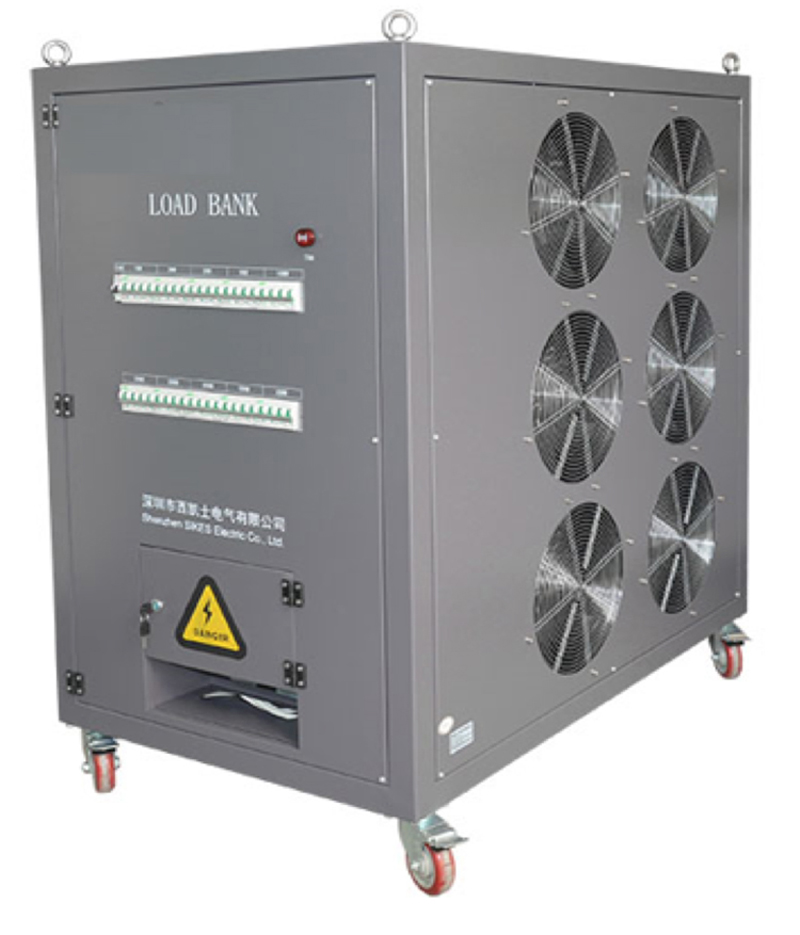Regenerative Load Bank
Are you seeking ways to reduce energy costs in your facility? Look no further than regenerative load banks.
Problems Addressed by Regenerative Load Banks
Many facilities have numerous reserves of energy wasted through dissipated heat during energy generation processes or operations. Regenerative load banks can effectively recover lost energy and reduce energy expenditure by up to 90%. These load banks are suitable across multiple industries such as telecommunications, manufacturing, construction, and testing to reduce energy wastage.
What is a Regenerative Load Bank?
A regenerative load bank is an electronic device that utilizes regenerative power to emulate the electrical load of actual applications. The system uses an energy recovery process to recover lost energy, unlike traditional load banks that convert energy into heat, which is dissipated. This energy-saving concept wastes less energy, reduces fuel consumption and can reduce CO2 emissions by up to 90%.
The Benefits of a Regenerative Load Bank
With a regenerative load bank, you can expect a longer service life, reduced cost, improved efficiency, and a higher return on investment. This device can significantly reduce your energy costs, making it a worthwhile investment in the long haul.
Target Market and Personal Experience
Regenerative load banks are beneficial to organizations that require large amounts of energy to perform their daily operations. I used to work for a telecommunications firm that depended heavily on power to run its operations. After the installation of a regenerative load bank, our utility expenditure significantly decreased, and the company could save up to 90% of energy costs annually.
Image courtesy of Power Systems Design
Construction Industry
Construction sites have significant energy demands for tasks such as processing, manufacturing, and heating. With the use of a regenerative load bank, this industry can reduce the amount of fuel consumed and decrease the carbon footprint of its operations. This decreases the operating costs and increases profits by allowing projects to be completed faster, saving a vast amount of energy in the process.
Image courtesy of EE Power
How Regenerative Load Banks Work
A regenerative load bank works by connecting it to the power source that needs testing. The device replicates the load of the actual application while returning energy to the source. The recovered energy is then transferred to other devices in the network reducing the power consumed from the grid.
Reducing Carbon Footprint
With the implementation of a regenerative load bank, businesses reduce their CO2 emissions and decrease their carbon footprint, ultimately saving money while simultaneously helping the environment.
Telecommunications Industry
With the demand for quality communication services, the telecommunications industry is attempting to reduce operating costs. Reducing the utility costs associated with these services it will be necessary to install energy-efficient technologies such as regenerative loads.
Image courtesy of Power Systems Design
Question and Answer
What is a traditional load bank?
A traditional load bank is a device that absorbs electrical power and dissipates it as heat. The power is consumed without being recovered or reused.
What is the difference between an electronic load bank and a traditional load bank?
An electronic load bank uses regenerative power, recaptures energy, returns it to the source and stores/repurposes it for use later.
Are load banks environmentally friendly?
Yes, Load banks are environmentally friendly as they reduce energy consumption, decrease CO2 emissions, and reduce the carbon footprint of operations.
What are the benefits of purchasing a load bank?
The benefits of load banks include a longer service life, reduced energy costs, improved efficiency, and increase in return on investment.
Conclusion
Regenerative load banks serve as a game-changer for industries with large scale energy demands. The implementation of this technology not only reduces operating costs but also conserves energy that is traditionally wasted. Companies enjoy the benefits of longer service life, improved efficiency, and reduced carbon footprint in the process. Add a load bank to your facility today and enjoy the numerous benefits that come with it.
Gallery
High-power Regenerative DC Load Operates From 360-528 Vac Grid - Power

Photo Credit by: bing.com /
Regenerative AC Load Bank Reduces Energy Costs By 90% - New Industry

Photo Credit by: bing.com /
Economic Benefits Of Regenerative Electronic Loads

Photo Credit by: bing.com / regenerative loads economic electronic benefits enlarge click
China 200kw Resistor Load Bank For Generator Testing - China 200kw

Photo Credit by: bing.com / 200kw regenerative generator resistor
Intepro’s Regenerative AC Load Bank Reduces Energy Costs Up To 90%
Photo Credit by: bing.com / ac regenerative load bank pel reduces costs energy electronic
0 Response to "Regenerative Load Bank"
Post a Comment